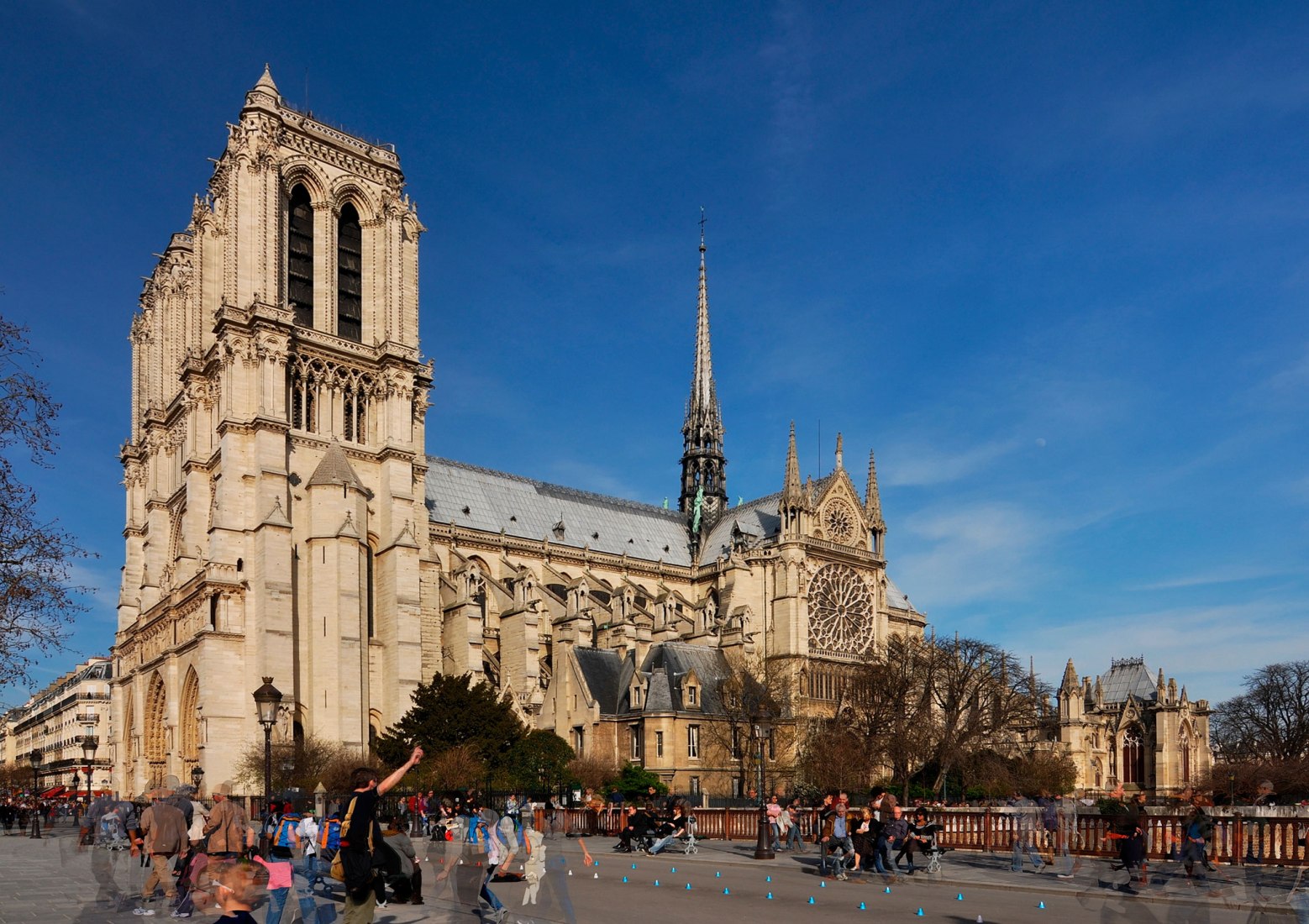World Heritage (included in the "Riverside of the Seine in Paris", ref 660, at the 15th session) (1991).
It is one of the most important buildings built in Gothic style (On the one hand, reminiscences of the Norman Romanesque, with its strong and compact unit, on the other hand, the already innovative use of the architectural evolutions of the Gothic), whose construction began in the year 1163 and finished in 1345, although the main structure had been completed around 1260. There were several architects who participated in the project, clarifying this factor the stylistic differences present in the building. Among its main construction features is the innovative use of the vault of crucería and the buttress.
In 1793, during the French Revolution, more elements of the cathedral were destroyed and many of its treasures stolen, finishing the space itself as a warehouse for food. In 1804 Napoleon Bonaparte crowned himself emperor in the cathedral.
The cathedral has a cruciform plant of 5 ships and double ambulatory and has been modified on numerous occasions since then, among others, Eugène Viollet-le-Duc carried out a restoration project that began in 1845 and lasted for a quarter of a century. In 1871, with the short ascent of the Paris Commune, the cathedral became again the backdrop to the social revolts, during which it suffered a fire attack. Also, in 1963 the facade was cleaned of soot and its original color was recovered. Between 1991 and 2000 a new cleaning and restoration campaign was carried out.
After the fire yesterday, the building has suffered its greatest damage due to a fire, at the time when restoration work was being carried out; The structure has been saved although the damages are numerous. The cover collapsed completely, the central needle fell and the rosettes have been damaged.
The "legend" of Notre Dame and its worldwide fame begins on March 16, 1831 with the publication of the book by Victor Hugo, Our Lady of Paris. Work that is a before and after for the cathedral. The plot of the book is the following:
At the top of the Notre Dame cathedral, hidden from the eyes of all the citizens of Paris, lives Quasimodo. His tutor, Judge Frollo, does not allow him to come down from the bell tower. Quasimodo spends his days with his three stone gargoyle friends, Victor, Hugo and Laverne, watching the bustle of the streets of Paris. One day he decides to leave the cathedral in secret and meets the beautiful gypsy Esmeralda, with whom he will live his greatest adventure.
"Even today the church of Our Lady of Paris continues to be a sublime and majestic monument"
"Even today the church of Our Lady of Paris continues to be a sublime and majestic monument"
Our Lady of paris of Victor Hugo. Capter "Our lady".
Curiously, the author promoted the restoration of the cathedral, thanks to his book. In July of 1845, a law was voted to restore the cathedral, and raised the fame of the cathedral throughout the world. Yesterday the cathedral burned and Victor Hugo somehow predicted this, citing in the prologue of his book: "Mutilations come from everywhere, both from inside and from outside" he lamented. "Perhaps the church itself will soon disappear from the face of the earth" the writer prophesied.
Since the appearance of his work, the whole world imagines that the cathedral is inhabited by the ghosts of Esmeralda, the hunchback Quasimodo or Frollo.
Since the appearance of his work, the whole world imagines that the cathedral is inhabited by the ghosts of Esmeralda, the hunchback Quasimodo or Frollo.

















































